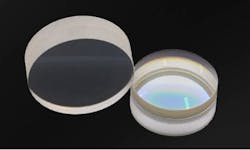Enhancing Optical Clarity: Exploring Pros and Cons of Achromatic Lenses
May 22, 2024
Related To:
Enhancing Optical Clarity: Exploring Pros and Cons of Achromatic Lenses
Achromatic lenses, also known as achromats, serve a critical role in optical systems by mitigating chromatic aberration, a common issue that affects image quality. This article explores the merits and demerits of achromatic lenses, as well as their optimal applications.Merits of Achromatic Lenses:
- Wide Spectral Range: These lenses exhibit effectiveness across a broad spectral range, extending from visible light into near-infrared and ultraviolet regions. This versatility makes them suitable for diverse applications requiring precise color rendering.
- Chromatic Aberration Correction: A primary advantage of achromatic lenses is their ability to correct chromatic aberration effectively. By combining distinct lens elements, typically featuring low and high dispersion, these lenses minimize color fringing, resulting in sharper, more accurate images.
- Versatility: Achromatic lenses come in various configurations, including doublets, triplets, and aspheric designs, offering versatility for different optical systems and requirements.
- Improved Image Quality: Achromatic lenses significantly enhance image quality by reducing chromatic aberration. This improvement is particularly noticeable in high-magnification optical systems such as telescopes, microscopes, and cameras.
Demerits of Achromatic Lenses:
- Complex Manufacturing: Manufacturing achromatic lenses entails meticulous material selection, precise alignment, and lens element cementing, leading to increased production costs due to the complexity involved.
- Bulkiness: The multiple elements comprising achromatic lenses can result in larger and heavier constructions compared to simpler lenses, potentially limiting their suitability for certain applications.
- Limited Correction: Despite their effectiveness, achromatic lenses may not completely eliminate chromatic aberration, leaving behind some residual distortion, particularly in lower-cost or less precise variants.
When to Use Achromatic Lenses:
Achromatic lenses are ideal under the following circumstances:
- Color Distortion Reduction: When optical systems exhibit noticeable color fringing or distortion, achromatic lenses offer effective mitigation, leading to clearer and more accurate results.
- High-Quality Imaging: For applications demanding high-quality, color-corrected images, such as in cameras, telescopes, and microscopes, achromatic lenses are the preferred choice.
- Precision Optical Systems: In fields requiring precise optical performance, including scientific research, medical imaging, and aerospace, achromatic lenses ensure accurate results.
- Broad Spectral Range: Applications spanning a wide spectral range, such as spectroscopy and photography, benefit from achromatic lenses’ ability to correct chromatic aberration across various wavelengths.
- Cost Considerations: Despite being more expensive than simple lenses, achromatic lenses provide a cost-effective solution compared to more complex alternatives like apochromatic lenses, making them suitable for scenarios prioritizing optical quality within budget constraints.
Achromatic lenses play a pivotal role in addressing chromatic aberration and enhancing image quality across diverse optical applications. Their effectiveness in ensuring color accuracy and performance over a wide spectral range underscores their significance in optical engineering. However, their suitability depends on specific application requirements and considerations.
Do not hesitate to contact Shanghai Optics today. We’d be more than happy to discuss your projects and how best they can become a success.
Sponsored Recommendations
Sponsored Recommendations
March 31, 2025
March 31, 2025
March 31, 2025
March 31, 2025
Voice your opinion!
Voice your opinion!

